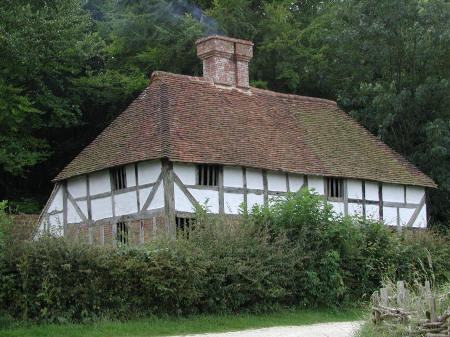Privacy and Technology
Today, privacy and technology. The University of Houston's Department of History presents this program about the machines that make our civilization run, and the peoplewhose ingenuity created them.
Facebook. Metadata. Cloud computing. Thanks to new media and cutting-edge technology, a swirl of information about ourselves floats through cyberspace. Every day we hear how companies and governments use our personal data. Electronic technology has radically changed the way we interact with each other. And it forces us to think about what is private and what is not.
This is a problem of our time. Yet it's part of a long dialog between technology and our ideas of privacy. Let's go back to 12th century Europe. People expected'and had'almost no privacy. In most homes, even wealthier ones, family and servants lived together in a large open room. They slept and ate and lived in the same space. Why? In part because the fire providing warmth and cooking was vented through a hole in the roof. Smoke filled people's homes, especially near the ceiling.

Image source: https://teenyblessings.wordpress.com/2009/12/18/15th-16th-century-houses/
Then came the chimney. This new technology pulled out the smoke. Separate sleeping quarters upstairs now became practical. Houses grew to more than one room. With private physical spaces now more present in daily life, the mental architecture of privacy developed.
The printing press, too, helped shape ideas of privacy. Books and increasing literacy opened the interior life of the mind to more people. Renaissance thought promoted self-reflection.
Yet privacy as we know it was a long time coming. For centuries, church and state expected us to watch our neighbors, to report heresy or bad behavior. Personal beliefs were not really private.
In time, though, we began to expect privacy. 18th-century parents had separate spaces from children and servants in the home. Private thoughts, even unconventional ones, were just that — private. Family life, personal beliefs, private business — all were valued and protected.
By the later 19th century, we begin to talk of a "right to privacy". This, too, sprang in part from technological change. The great jurist Louis Brandeis wrote that 'instantaneous photographs and newspaper enterprise have invaded the sacred precincts of private and domestic life'. Law, he said, must place limits on these newfangled invaders of privacy.
And now our devices can track almost every detail about us. We claim a right to privacy and have laws to protect it. Yet most of us share — voluntarily or not — our personal information with others. Perhaps we have come full circle. Are we returning to a world where we neither expect nor have real privacy? I for one hope not. No matter what, technology will keep shaping our ideas of privacy. As the world continues to change, surely our ideas of privacy will change yet again.
I'm Cathy Patterson at the University of Houston, where we're interested in the way inventive minds work.
(Theme music)
Philippe Aries and Georges Duby, General Editors, A History of Private Life, 5 vols. (Cambridge, MA: Belknap Press, 1987)
Louis Brandeis and Samuel Warren, 'The Right to Privacy,' Harvard Law ReviewIV (December, 1890). Accessed at https://faculty.uml.edu/sgallagher/harvard__law_review.htm, July 3, 2013. (Brandeis later went on to become a Justice of the US Supreme Court.)
James Burke, Connections (Boston: Little, Brown, and Company, 1978), pp. 157-160.
'Timeline: A History of Privacy in America,' Scientific American (September 5, 2008). Accessed at https://www.scientificamerican.com/article.cfm?id=timeline-a-history-of-privacy, July 3, 2013.
This episode first aired on July 24, 2013.
